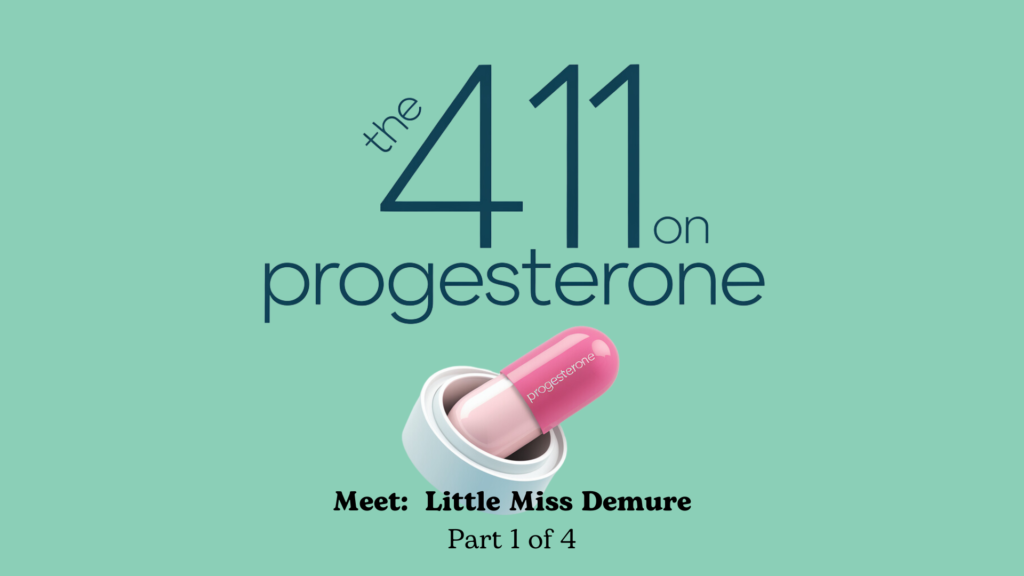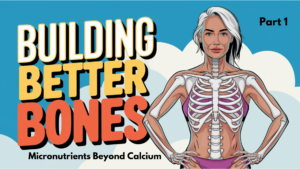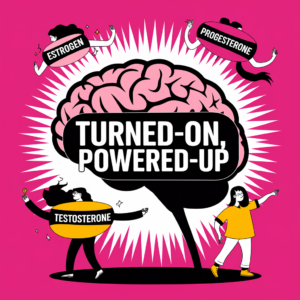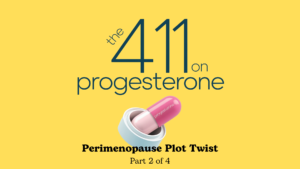Why do I need progesterone? How much should I take? When should I take it? Do I need it if I’ve had a hysterectomy? Can I take it before perimenopause? What if oral progesterone makes me feel bad? How should I test for it? Does the dose vary depending on my estrogen dose? What are the symptoms of too little progesterone? Help!
I get questions about progesterone every day in my clinics and on social media. So. Many. Questions! This 4-part series seeks to answer those questions (and more!) and will serve as a guide to return to repeatedly as you go through pre-menopause, perimenopause, and menopause. In Part 1 (this one), I’ll introduce progesterone and discuss symptoms associated with too little or too much. Part 2, is the Perimenopausal Plot Twist. Part 3 is a doozy – Forms, Routes and Dosing Strategies. Part 4 – Why You Need It (Even if you don’t have a uterus).
Meet the Hormonal Players
But what happens if estrogen goes overboard? Or, if you have estrogen but not enough progesterone to balance it?
Estrogen is the “extra” hormone – always doing the most, building things up, and making everything just a bit more dramatic. It’s the friend who convinces you to add sparkles to your outfit, orders dessert after a full meal, and turns every gathering into a party. In the body, it’s constantly amplifying and building: thickening the uterine lining, boosting bone density, plumping up skin cells, powering your brain, and ramping up curves by encouraging fat storage in all the right places.
Common “Extra” Estrogen Symptoms:
- Tender, swollen breasts, and heightened sensitivity – estrogen making everything fuller and more dramatic
- Heavy periods with thick uterine lining shedding – the “more is more” philosophy in action
- Mood swings and heightened emotions – turning emotional responses up to 11
- Water retention – holding onto extra fluid just because it can
- Headaches and increased migraine sensitivity – when the hormonal party gets too loud
- Increased appetite and sugar cravings – estrogen’s not subtle about wanting more energy stores
Estrogen-Driven Structural Changes: (these can occur with chronically high estrogen)
- Fibrocystic breasts – overenthusiastic tissue development creating lumpy areas and fluid pockets
- Breast tissue density increases – making mammograms harder to read because there’s just so much going on
- Uterine fibroids – excessive growth of uterine muscle tissue into benign tumors
- Ovarian cysts – follicle development gone “extra”
- Endometriosis – when the uterine lining tissue decides to grow in extra places it doesn’t belong
The above “extra” estrogen symptoms are common during premenopause and early perimenopause. Later in perimenopause and menopause, it’s more common to see low estrogen symptoms.
Progesterone is the demure, placid hormone – the quiet coordinator who keeps things running smoothly behind the scenes. While estrogen is throwing glitter in the air, progesterone is calmly organizing the cleanup crew. It’s the friend who suggests a cozy night in, makes sure everyone drinks enough water at parties, and gently reminds you it’s time for bed. In the body, it’s all about maintaining calm and stability: soothing the nervous system, stabilizing the uterine lining, and ensuring everything stays nice and steady.
But don’t let its quiet nature fool you. Progesterone is the yin to estrogen’s yang, the demure backup singer whose absence can bring the whole show crashing down. You might not notice it when it’s doing its job perfectly, but everything falls apart when it’s missing.
When Progesterone Goes High
While high progesterone isn’t common in perimenopause or menopause (unless you’re taking supplemental progesterone), it’s worth understanding what it looks like when this calming hormone gets a bit too… calming.
Common high progesterone symptoms include:
- Excessive fatigue and drowsiness – when the calming effect becomes more like sedation
- Depression or emotional flatness – the “placid” nature becoming too subdued
- Absent or very light periods – progesterone being too effective at maintaining the uterine lining
- Brain fog and difficulty concentrating – everything moving in slow motion
- Dizziness and low blood sugar episodes – metabolism becoming too quiet
- Loss of libido – the ultimate “not tonight, dear” hormone state
- Intense food cravings, especially carbs – the body quietly panicking about energy levels
- Bloating or heartburn – progesterone slows down gut motility
High progesterone typically stems from a few specific causes:
- Progesterone medications
- Pregnancy
- Ovarian cysts
- Adrenal gland problems
When Progesterone Goes Low
Low progesterone is far more common, especially during perimenopause. What’s particularly tricky is that low progesterone and high estrogen often create similar symptoms – these two hormones need to balance each other out for optimal function.
When progesterone drops too low, you might experience:
- Anxiety, depression and mood swings
- Difficulty sleeping
- PMS – including pain, irritability, and breast tenderness
- Irregular or heavy periods
- Headaches (including migraines)
- Weight gain
- Hot flashes
- Decreased libido
- Infertility
The Science Behind Low Progesterone
Progesterone is primarily produced during the luteal phase – the second half of your menstrual cycle. It’s made by the corpus luteum, the remnants of your “golden egg” after ovulation. This means that any disruption to regular ovulation can lead to progesterone deficiency.
Common causes of low progesterone include:
- High-stress levels – cortisol spikes while progesterone suffers
- Polycystic ovarian syndrome (PCOS) – irregular ovulation means irregular progesterone production
- Thyroid dysfunction or elevated prolactin – both can interfere with normal ovulation
- Birth control medications – most suppress natural progesterone production
- Extreme dieting or overexercise – your body conserves resources by reducing hormone production
- Perimenopause/Menopause – natural decline in ovarian function
Why Balance Matters
Understanding progesterone isn’t just about identifying when it’s too high or too low – it’s about appreciating its role in hormonal harmony. This quiet hormone plays crucial roles in:
- Neurotransmitter balance – particularly GABA, our primary calming neurotransmitter
- Sleep regulation – working with our circadian rhythm
- Stress response – balancing cortisol’s effects
- Reproductive health – maintaining pregnancy and regulating menstrual cycles
- Bone health – stimulating new bone formation
- Neuroprotection – reducing inflammation and supporting brain health
Think of progesterone as the stage manager of your hormonal theater. While estrogen might be the show’s star, progesterone ensures the performance runs smoothly, with perfect timing, and everyone hits their cues. Without adequate progesterone, you might have all the right actors, but the show would quickly descend into chaos.
Next up in this series, we’ll explore how progesterone changes during perimenopause and why it might be your secret weapon during this transition. Stay tuned!
Author’s note: This article is part of a series on hormonal health and optimization. Always consult with your healthcare provider before making changes to your hormone management strategy. And, of course, this series is for informational purposes only and does not constitute medical advice… yada yada yada. :))













